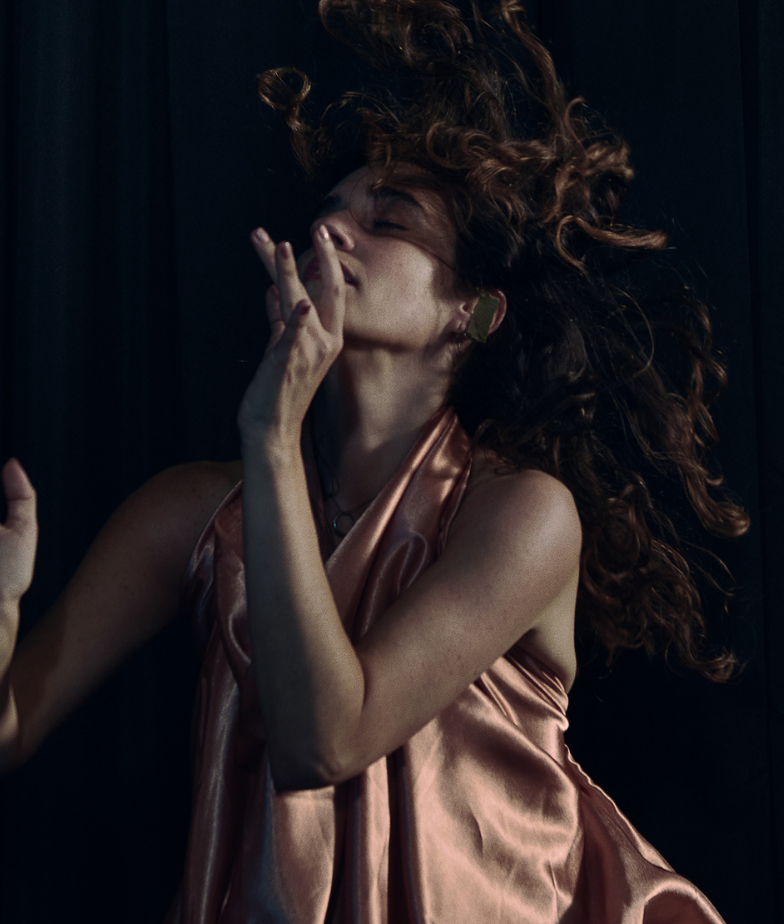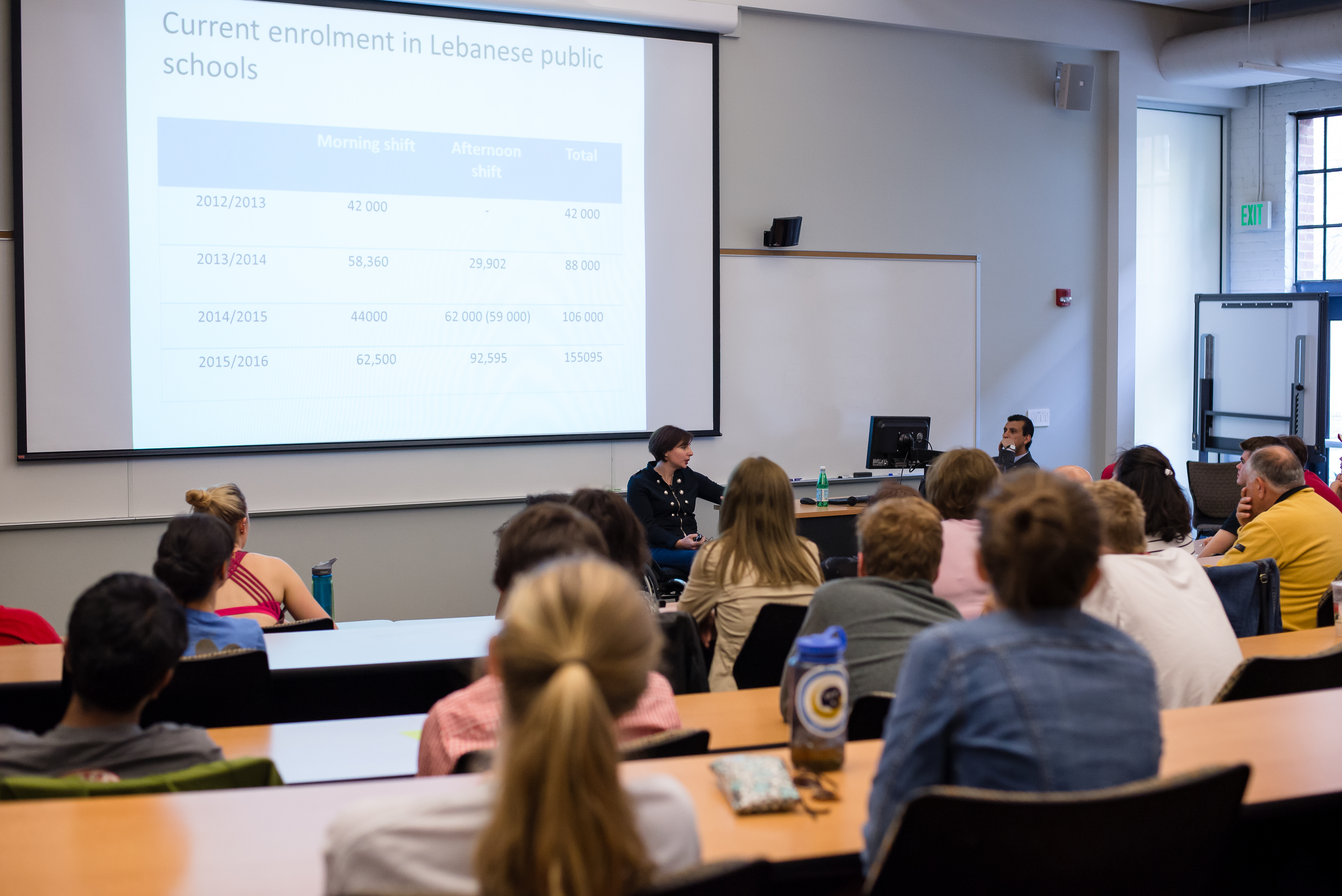Meryl Murman: Identity tied to Geography
This is the second in a two-part series focused on Meryl’s interdisciplinary work. You can read Part I here. This article is written by Meryl Murman, a Lebanese-American interdisciplinary artist. Her newest work is a choreographic residency called The Lipstick. You can learn more about Meryl and her work here.

When I read Mai Ghoussoub’s short story Red Lips it unleashed a series of complex questions. I could feel movement in my body as I read the words, but I was not inclined so much to re-interpret the story for the stage, as I was interested in further exploring some of the questions and themes it provoked through movement and choreography. Particularly striking to me was the use of color that the story invoked on my imagination. Throughout the short narrative she intersperses definitions of the color red, ranging from poetic, to historical accounts of how the color, particularly in the form of lipstick has been significant to humanity. The color becomes all the more poignant when shown in contrast to a world of shadows and grey, a world of silence and censorship. When I first met with the performers: dancers Calvin Rowe, Gregory Dorado, Phillip Rush and David Llorca, and the violinist/composer Rebecca Crenshaw we read the story. One question to emerge was, ‘why men?’ and did I wish to make a comment about females with men? My response was that I wished to make a piece about the color red, and more importantly the color red in contrast to a world of blackness, conformity, silence. I encouraged them to be a man if they identified themselves as a man, or be a woman if they identified themselves as a woman. I wanted them to be themselves: both the many layers of performing self that outwardly exist, and the self-known interiority within. I was interested in how each of us had experienced external or self-imposed censorship on our identity, and how identity was tied to geography. What was inherited, what was learned, and how. In what ways could the act of performance further provoke these concepts and thwart expectation? The story had encouraged me to look deeper into my own complex feelings surrounding identity and my Lebanese heritage: where did the cultural residue of my ancestors experiences resonate in my life, and what have I censored and why? What is inherent to this act of remembering who and what came before? When and why have I rebelled? It became evident as I poked deeper, that there were rituals to the way a place and a history is remembered, and that for me personally, religion and race were interwoven.
These questions set us down a path of heavily exploring the concept of ritual, from its broad definition as a series of formal performative acts often associated with religions or significant public events like weddings and funerals to the acts of ritual embedded in attending a performance. How could we use ritual in both performance/the process of creating movement, as well as break and re-define the rituals we were creating through acts of transgression? During the next five weeks we explored physically embodying our own relationships to gender, conformity, heritage, censorship, ritual, religion, identity, and the color red. Pushing ourselves to dismantle perceived notions of self, ( ie. that the performers on stage perceived themselves as “men” or “women,” as “dancers” or “musicians.”) Through movement and music we found ways to transgress the boundaries of outward symbolism, to fuse what was male/female, music/movement, ritual/performance, identity/heritage into something new, seamless and specific to the world we were re-creating from the remnants of the one we live in -remnants that are inherently recorded in the muscle memory of our bodies. For me the most startling and striking revelation were the points of trauma – where and how they emerged physically/emotionally, and then not being afraid to dig into them deeper.
The first staging of The Lipstick, happened six weeks into what is a year-long choreographic residency for me at Dancing Grounds in New Orleans, LA. Dancing Grounds’ AIR program directed by Laura Stein, has allowed me time, space and resources to further my choreographic investigations, and experiment with new processes. I took chances in the development of this piece that under more restrictive circumstances with less time and support might have been tough. I wanted the process of making The Lipstick to also be an act of ritual, which was at times grueling and uncomfortable for everyone in the room. Remembering the past – especially ancestry – I found was not always easy. Time is elongated, ruptured, rewound. Points of trauma are re-visited dramatically on stage through pushing the body over long durations and then spontaneously demanding highly tense positions. I also played with creating structure and then disrupting it, because that felt most accurate to the act of remembering, to memory. This resulted in both music and movement being a mix between highly structured material and improvisation. The journey since January has been inspiring and revealing. My relationship to my cultural identity, and my complex but far from negative feelings towards my religious upbringing and heritage have greatly informed who I am today, yet I have shied away from putting these questions at the center of a process. Perhaps out of fear of appropriation or cultural cliche, or perhaps because I learned pretty quickly in the contemporary art world that having any kind of religious identity was pretty “un-cool.” Even in the first staging I was told by some liberal acquaintances that they would not be attending because they were concerned about being uncomfortable with the ‘spiritual’ subject matter. I laughed. Perhaps making public my personal and complex view of religion is the most transgressive act of all.
Short biography
Meryl Murman makes magic, movement and moving pictures. She is a New Orleans based interdisciplinary artist creating dance, film and performance since 2004. Her work has been seen in NYC, Los Angeles, New Orleans, Cleveland, Bangor, and Austin. Most recently her choreography Rouge was presented at REDCAT in May 2014, Los Angeles. Internationally she has been blessed with the opportunity to create and collaborate with artists in Johannesburg South Africa. In New Orleans she co-founded Broken Wings Productions, a production company dedicated since 2010 to experimenting with the intersection of dance and film. Their largest and most recent project to date, the forty-minute dance film, Le Pain, shot in New Orleans, LA can be seen nationally and internationally at film festivals this year. Murman received her BFA from NYU Tisch School of the Arts and her MFA in Choreography and Integrated Media at California Institute for the Arts.
- Categories:

